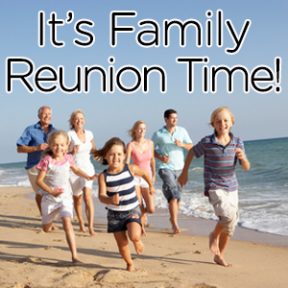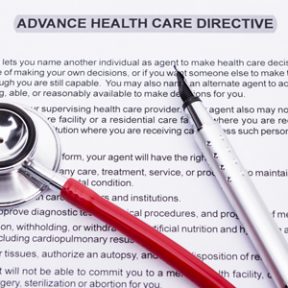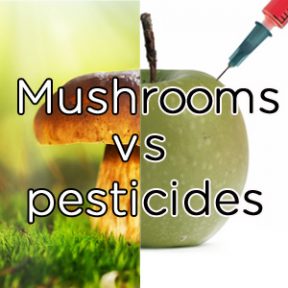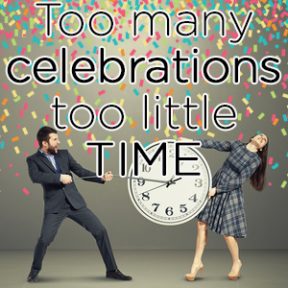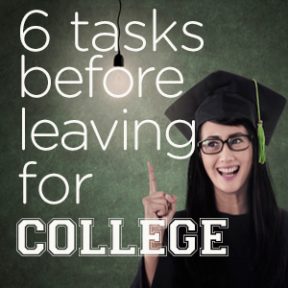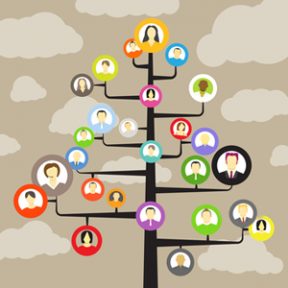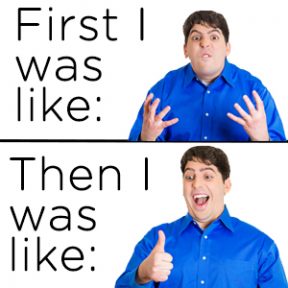
With undergraduate college degrees costing between $60,000 and $240,000 today, I wonder how long brick and mortar institutions will be the norm. Seriously, how long can the average family afford to give all of their children college educations AND plan for their retirements? That’s why colleges are scrambling to find alternative ways to offer higher education.
It seems that if we take the top professors, the ones who are incredible experts in their respective fields who also happen to be entertaining lecturers who inspire their students, and then record and broadcast their entire classes, we can offer the most dynamic educational experience to unlimited students. These professors could be compensated handsomely for preparing mind-blowing lectures that will be captured on film. This concept is called MOOCs, or Massive Open Online Courses. A Harvard and MIT research team studied MOOCs in 68-certificate-granting courses with over a million participants.
Interestingly, about 40% of the MOOC students were actually teachers. No surprise here; teachers love to learn. More and more people are interested in seeking this type of certification. But when MOOCs are free, students don’t take the courses seriously and often don’t complete the courses or do the reading and homework. A friend of mine who writes curricula for Stanford’s MOOCs suggested that students who pay for classes and receive letter grades are more inclined to do the work and get more out of their classes.
If MOOCs that lead to degrees become the norm in the future, it will create a massive restructuring of the college experience. Rather than parents being wowed by the landscaping or architecture during college tours and visits, instead, they will be wowed by opportunities to learn from world-famous professors. It’s like sharing the wealth and talent of our best faculty with everyone. The possibilities are endless and student learning will be comprehensive.
Students of the future might have options to take MOOCs at a number of different schools at the same time. Imagine if they could pick fascinating courses taught by cutting-edge professors, with no physical limits to attendance (like the number of seats in the lecture hall). No more would students need to accept boring professors or TAs teaching their classes – these classes would be lightly attended and would probably not survive, kind of like professorial natural selection. This could really revolutionize higher education!
[Source]

With undergraduate college degrees costing between $60,000 and $240,000 today, I wonder how long brick and mortar institutions will be the norm. Seriously, how long can the average family afford to give all of their children college educations AND plan for their retirements? That’s why colleges are scrambling to find alternative ways to offer higher education.
It seems that if we take the top professors, the ones who are incredible experts in their respective fields who also happen to be entertaining lecturers who inspire their students, and then record and broadcast their entire classes, we can offer the most dynamic educational experience to unlimited students. These professors could be compensated handsomely for preparing mind-blowing lectures that will be captured on film. This concept is called MOOCs, or Massive Open Online Courses. A Harvard and MIT research team studied MOOCs in 68-certificate-granting courses with over a million participants.
Interestingly, about 40% of the MOOC students were actually teachers. No surprise here; teachers love to learn. More and more people are interested in seeking this type of certification. But when MOOCs are free, students don’t take the courses seriously and often don’t complete the courses or do the reading and homework. A friend of mine who writes curricula for Stanford’s MOOCs suggested that students who pay for classes and receive letter grades are more inclined to do the work and get more out of their classes.
If MOOCs that lead to degrees become the norm in the future, it will create a massive restructuring of the college experience. Rather than parents being wowed by the landscaping or architecture during college tours and visits, instead, they will be wowed by opportunities to learn from world-famous professors. It’s like sharing the wealth and talent of our best faculty with everyone. The possibilities are endless and student learning will be comprehensive.
Students of the future might have options to take MOOCs at a number of different schools at the same time. Imagine if they could pick fascinating courses taught by cutting-edge professors, with no physical limits to attendance (like the number of seats in the lecture hall). No more would students need to accept boring professors or TAs teaching their classes – these classes would be lightly attended and would probably not survive, kind of like professorial natural selection. This could really revolutionize higher education!
[Source]
 Life gets busy but it’s important to make room for FAMILY REUNIONS. It goes without saying, your elders won’t be around forever and when they go, they’ll take your family history with them. Sure you might have to deal with those annoying relatives — we all have them — but your kids will benefit from seeing where they fit into your family tree.
Life gets busy but it’s important to make room for FAMILY REUNIONS. It goes without saying, your elders won’t be around forever and when they go, they’ll take your family history with them. Sure you might have to deal with those annoying relatives — we all have them — but your kids will benefit from seeing where they fit into your family tree.
My family didn’t have family reunions on either my mom’s or dad’s sides — odd, huh? So 6 years ago I hosted the first family reunion for my mother’s side. We videotaped everyone’s oral histories to capture their stories, and we even taped group discussions about our ancestors that went back several generations.
I loved hearing 3 versions of how my grandfather came over from Japan, and how the anti-immigration laws kept my grandmother waiting for 7 years to join him. Hearing how they lived before WWII, and then how the family lost their business and all possessions while incarcerated in an internment camp was fascinating.
My girls appreciated hearing first hand the hardships that their family endured, and how the family prospered again through hard work and determination. I co-hosted the 2nd reunion in 2013 in Pasadena at my uncle and aunt’s house, and we’re hosting the 3rd reunion this August.
This summer I’m also hosting the first family reunion for my father’s side right here in Santa Cruz. We’ll be capturing these family stories, building a family tree, entering data in Family Tree Maker, and playing lots of games to teach us about our ancestors. I’m looking forward to bonding with cousins that I rarely see and most importantly, I want my girls to really know their relatives and be proud of their ancestors.
So if you have the opportunity to attend a reunion this summer, carve some time out of your busy schedules to check it out. Your kids will thank you some day.
 Okay, I know nobody wants to talk about who will make their end-of-life decisions. I avoided this topic for decades. Even when I went to write my own ADVANCE DIRECTIVE, I found all kinds of excuses for why I couldn’t fill in the blanks and state when it would be time to pull the plug on me. I even wrote a comprehensive will designating exactly who gets what so there would be no disputes after I die. But having to clearly lay out precisely at what point I don’t want any life support was gut-wrenching to me.
Okay, I know nobody wants to talk about who will make their end-of-life decisions. I avoided this topic for decades. Even when I went to write my own ADVANCE DIRECTIVE, I found all kinds of excuses for why I couldn’t fill in the blanks and state when it would be time to pull the plug on me. I even wrote a comprehensive will designating exactly who gets what so there would be no disputes after I die. But having to clearly lay out precisely at what point I don’t want any life support was gut-wrenching to me.
While my daughter Nicole was in medical school at Stanford, she wrote a song and created a musical video, “Ode to Advance Directive,” that clearly stated why everyone should complete an Advance Directive. It wasn’t until I heard her perform the song before her Class of 2008 that I realized that I was being selfish by not writing and signing my advance directive. If I was to become incapacitated — you know, brain dead — without an advance directive, my husband Rob and my daughters would have to make the decision.
Undoubtedly, this would be very difficult and no matter what they decide collectively or separately, they would suffer anxiety from having to make this call. That’s when I finally got up the courage to read through the advance directive forms and fill in the blanks. I had it notarized at my credit union and placed it in my safe deposit box. Now I know that if the time comes for them to make my end-of-life decision, they’ll be able to do it because they’ll know exactly what my wishes are for that situation. The last thing I want to do is create strife between my family. So, write yours! Here is a link to the forms. Just do it!
Please watch this music video and pass it along to your family and loved ones. It’s the best parting gift you can give them.
 We’ve got pesticide and GMO problems that are causing massive agricultural issues and health degradation for humans AND bees.
We’ve got pesticide and GMO problems that are causing massive agricultural issues and health degradation for humans AND bees.
Using something as simple as mushrooms (no, not magic mushrooms), Paul Stamets (a real fun guy, get it?) has patented a SMART pesticide to destroy over 200,000 species of insects without harming plants or humans.
Unfortunately, pesticide giants like Monsanto don’t want us to learn about this new-found solution.
Watch his TED Talk below:
Now can you imagine mushrooms solving our pesticide and GMO problems?
[Source]
 We’re all proud of our recent grads, and frankly, and if you’re like most parents, you’re just glad you made it to the end of the school year without going crazy. Every year, the demands on parents to volunteer, attend, and host end-of-the-year celebrations seems to have increased exponentially. YIKES! Check out the New York Times’ article “Mom and Dad Have Their Own Set of Finals” to see that this has become A THING that has consumed us at the end of each school year.
We’re all proud of our recent grads, and frankly, and if you’re like most parents, you’re just glad you made it to the end of the school year without going crazy. Every year, the demands on parents to volunteer, attend, and host end-of-the-year celebrations seems to have increased exponentially. YIKES! Check out the New York Times’ article “Mom and Dad Have Their Own Set of Finals” to see that this has become A THING that has consumed us at the end of each school year.
Isn’t it true that you feel terrible if you don’t attend EVERY SINGLE CELEBRATION and AWARDS CEREMONY? And, haven’t you reached the point when you’re no longer enjoying these events because you’re rushed, stressed and pressured to be everywhere — all at once? That’s why I say, “Congratulations to you amazing moms and dads! You’ve pulled it together and received A’s on your finals!”
Next year, stop that dreadful treadmill and limit the number celebrations you’ll attend. Just let your kids decide which ones are the most important to them. That way, you’ll enjoy them more and you’ll be better able to support your kids while they’re stressed out and/or freaking out during finals! AND you’ll have more free time! Sounds like a win to me!
[Source]
 Now that the graduation ceremonies and parties are done (hooraaaay), and your young adult is biding time before heading off to college in the fall, review this list of 6 tasks that will help them close this chapter in their lives and be prepared to start their next one.
Now that the graduation ceremonies and parties are done (hooraaaay), and your young adult is biding time before heading off to college in the fall, review this list of 6 tasks that will help them close this chapter in their lives and be prepared to start their next one.
One: Clean Your Room!
Okay, this is a great way to get them to get rid of all of their “junk” that they’ve hung on to for years. Set up 2 large bins: one for trash and the other for Salvation Army or Goodwill. Then, give them a designated area where they can keep their belongings that they’ll need when they come home for holidays and breaks. Any remaining items can be stored if they’re family heirlooms or mementos, or sold on Craigslist or at a yard sale for cash.
Two: Write Your Autobiography
Before heading off to college, have your teen write an autobiography to give them closure on the first 18 years of their lives. If writing or organizing something like this is not your kids’ cup of tea, they can always create a scrap book or photo album and fill it with their favorite memories. Giving them a sense of who they are will instill a strong sense of self-esteem, which will in turn give them a solid foundation on which to build their future.
Three: Create Your 4-Year College Plan
Have them organize their entire 4-year plan for college. By doing the research and thinking about what they hope to learn before the graduate, they’ll understand what courses they need to take for their majors (and minors) and general education requirements. They can even add in internships, jobs, and research so they don’t have regrets later. Not only will they take advantage of the many programs available to them on campus, they’ll graduate in 4 years, which will save you between $12,000-$60,000 (depending on their tuition). I probably don’t have to tell you that anything you can do to save yourself tens of thousands of dollars is time well-spent.
Four: Purchase College Items Early
Every college gives students a list of things they should bring with them during orientation and before classes begin. If your kid is like most college-bound students, they’ll probably wait until the last minute to buy these things, which means you’ll be paying top dollar at the nearest stores when you arrive with their stuff piled high in your minivan. Instead, ask them to make a list of items they want and ask them to find sales. They can even go on Craiglist, Amazon, flea markets, garage sales, and local bargain stores to get great deals. Most colleges provide a twin bed (extra long), desk, chair and closet. PRO TIP: Buy the extra-long sheets online to get lower prices. They might want a mini-fridge or microwave for their dorm, and you can get those used. My daughter got one for free when students were vacating their dorms and didn’t have a place to store them. Score!
Five: Indulge in Reading
This will be the first time in over a decade that your kid won’t have a list of “summer reading” and stress to study for SATs or ACTs. They actually have no responsibilities and no stress. So, give them a list of classics to read for the summer (reading isn’t really a responsibility).
Six: Get a Job
With no homework, stress, or lists of things to do — well, except these (awesome) lists — they can go out and earn a buck! With no degrees or seniority, taking that low-paying summer job will be just what they need to realize how important it is to get their college degree! So let them slave away at an ice cream counter or bus tables at a restaurant. Earning those extra nickels will also give them spending money once they get to college because you’ll be tapped out just paying their tuition, room and board and MONEY DOESN’T GROW ON TREES, KID!
 While most kids don’t enjoy writing — especially essays or reports — I’ve found that many actually do love to write about THEMSELVES. Face it, there’s nothing more interesting than one’s self, right? This project will get them shuffling through old photos and boxes of “stuff.” It’ll conjure up great memories with old friends and family. And most importantly, it’ll give them a great sense for who they are today based on who they were way back when. Even for young ones, a trip down memory lane is always fun.
While most kids don’t enjoy writing — especially essays or reports — I’ve found that many actually do love to write about THEMSELVES. Face it, there’s nothing more interesting than one’s self, right? This project will get them shuffling through old photos and boxes of “stuff.” It’ll conjure up great memories with old friends and family. And most importantly, it’ll give them a great sense for who they are today based on who they were way back when. Even for young ones, a trip down memory lane is always fun.
For elementary school-aged kids, supply them with photo albums or boxes of photos, mementos you’ve saved (art work, letters, awards), and plenty of paper and glue. Use 8.5″ x 11″ paper so you can bind everything at a copy center like Staples. Give them a timeline of big events that happened in their lives so they can use them as guidelines in laying out their autobiographies. Consider listing birthdays (of course!), sporting events, family vacations, best friends, favorite pets, and family get-togethers.
For middle and high school kids, they’ll probably prefer using Word or InDesign so they can add digital photos to their text. Ask them to layout their outlines and offer suggestions that will encourage them to write. If you can gather awards, old sports equipment, and photos, you might be surprised by their enthusiasm to scan and include those memories in their autobiographies.
My girls wrote autobiographies in kindergarten, 3rd grade, and again in 12th grade. They enjoyed writing them because it kind of summed up their lives. It’s always nice to reflect back on your accomplishments. I love to read them now because I can hear their little voices — and personalities — which takes me back to those happy places!
If your child needs motivation to get started or to finish their autobiographies, select a due date when they present them to the family. Invite family or friends over for the event so it adds weight to your deadline. We had little parties and they invited their friends. Just think, they’ll be creating something that will become a family heirloom!
 Could eating fermented foods really decrease social anxiety and depression?
Could eating fermented foods really decrease social anxiety and depression?
Recent research from reputable institutions like Harvard Medical School, the College of William and Mary, UCLA, and Oxford suggest that there is a relationship between good bacteria in the gut and mental health. Can you imagine eating foods like sauerkraut, kimchi, yogurt, pickles, kombucha, and fermented soy products to reduce anxiety and depression?
Better yet, you can actually make your own sauerkraut, kimchee or pickled vegetables at home by using something like this.
Please forward this to anyone you know you suffers from depression – this is an easy thing to try, and you don’t need prescriptions for pickles!
[Source]
 For profit Corinthian Colleges — AKA Heald, Everest, and Wyotech vocational colleges — filed for bankruptcy, leaving 100 colleges and 16,000 students in the lurch.
For profit Corinthian Colleges — AKA Heald, Everest, and Wyotech vocational colleges — filed for bankruptcy, leaving 100 colleges and 16,000 students in the lurch.
With just one day’s notice, Heald College campuses closed. Can you imagine going to a college that closes its doors on a moment’s notice? Unfortunately, 40,000 students don’t have to imagine it, because it happened to them.
Corinthian has been in hot water for a while now – in September, the Consumer Financial Protection Bureau sued them, accusing the chain of predatory conduct and lending abuses. “We believe Corinthian lured in consumers with lies about their job prospects upon graduation, sold high-cost loans to pay for that false hope and then harassed students for overdue debts while they were still in school,” said Richard Cordray, the consumer organization’s director.
In April, the Education Department fined Corinthian $30 million dollars for false advertising — 947 misrepresentations of placement rates for college graduates. In May, Corinthian had $143 million in debt and less that $20 million in assets. But its chairman, Jack D. Massimino, received a compensation package worth more than $3 million in 2013.
Amusingly, Corinthian’s mission statement includes the following: “We serve our students and operate our schools in keeping with our core values, including integrity, service, excellence and accountability” (emphasis mine).
The good news is that the government has stepped in and will forgive the student loans of 40,000 eligible Corinthian students.
[Source]
 Back in 1998, my oldest daughter Nicole and Merit classmate Joanne were the first students in the world to build a hydrogen fuel cell. They went on tour across the United States to demonstrate how fuel cells work by making ice cream with a machine powered by the fuel cell! Obviously they were the main attraction at their events – everyone loves ice cream! With no moving parts, it’s remarkable that hydrogen fuel cells can produce electricity with no CO2 pollution — the only by-product is water!
Back in 1998, my oldest daughter Nicole and Merit classmate Joanne were the first students in the world to build a hydrogen fuel cell. They went on tour across the United States to demonstrate how fuel cells work by making ice cream with a machine powered by the fuel cell! Obviously they were the main attraction at their events – everyone loves ice cream! With no moving parts, it’s remarkable that hydrogen fuel cells can produce electricity with no CO2 pollution — the only by-product is water!
In 2005, my youngest daughter Jaclyn started Kids 4 Hydrogen, a California non-profit organization to educate the public about 100% clean hydrogen. She was a keynote speaker at the Walt Disney Concert Hall at an awards ceremony honoring then-governor Arnold Schwartzenegger for initiating the California hydrogen highway. She started a movement to educate Americans on how to convert their internal-combustion engine vehicles so they could run on gaseous hydrogen instead of gasoline.
In 2012, Rebecca, a Kids 4 Hydrogen member, wrote the lyrics and Nicole sang the song, “In the Year 2020” to update the public on our environmental dilemma since Zager and Evan’s 1969 number-one hit “In the Year 2525.” Zohar created the music video. If you’re a boomer, you probably remember this classic. Check out the kids’ new version in this music video to learn more about how hydrogen can and most likely will become the future energy source.


